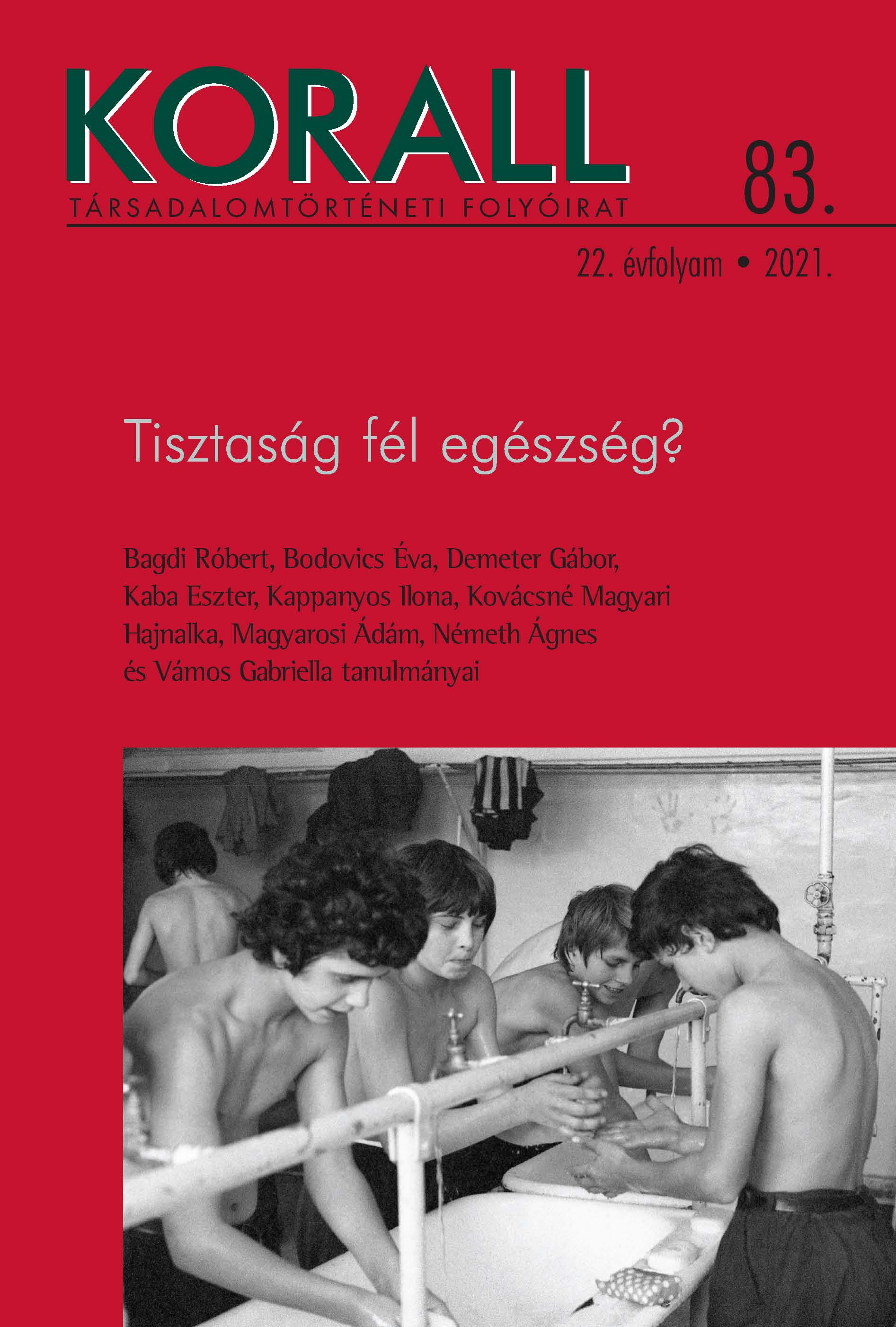Az egészség csatornái
Canals of Health
The Dawn of Sewage System Reform in (Buda)Pest and the Role of Károly Beivinkler in the Early 1870s
Author(s): Ágnes NémethSubject(s): History, Local History / Microhistory, Social history
Published by: KORALL Társadalomtörténeti Egyesület
Keywords: hungary;environmental control;water system;sewage system;
Summary/Abstract: The study explores environmental control in Budapest’s public health through the concepts of sewage system development from 1860 onwards. In this article,the author concentrates on the Hungarian adaptation and influence of the 1840s Sanitary Movement of England. Edwin Chadwick’s Sanitary Ideaemphasized the importance of cleanliness of everyday living conditions, whichwas underpinned by the popular miasma theory of nineteenth-century science.This new approach, which had a major impact on the development of London’swater system, set two main goals for the engineers: securing the amount of water necessary for maintaining sanitary lifestyles and the fast removal ofmiasma contamination from the system. Following London’s example, thefirst wave of sewage system development was rolled out in Europe’s largestcities from the 1860s onwards. In Budapest, the initiative was first tabled in1869, and the works began in 1891. During these two decades the discourseabout the water system was constantly on the agenda with minor stops andstarts. Several substantial plans were proposed, which all agreed on the necessityof improvement, especially in light of the repeated cholera outbreaks, butadopted different perspectives which led to significant variations in the possibleimplementation.On one hand, the study sets out to investigate how the sanitation movementand sewage development issues were presented for the contemporarypublic and in the press. How did it fulfil its information and opinion formingrole and how did it affect the decision makers of the time? What kind ofinformation was available for them about the Western European developmentsand how? On the other hand, related questions are also examined concerningthe theories and approaches that influenced the development plans as well asthe planning engineers’ access to and potential understanding of these. Specialattention is paid to Károly Beivinkler’s 1872 sewage system plan and its background.The plan was never realised and is now largely forgotten but it wasconceived in the spirit of the times, so the present study also queries whetherits theoretical approach was one of the potential reasons for the proposal’sfailure to launch.The study explores environmental control in Budapest’s public health through the concepts of sewage system development from 1860 onwards. In this article, the author concentrates on the Hungarian adaptation and influence of the 1840s Sanitary Movement of England. Edwin Chadwick’s Sanitary Idea emphasized the importance of cleanliness of everyday living conditions, which was underpinned by the popular miasma theory of nineteenth-century science. This new approach, which had a major impact on the development of London’s water system, set two main goals for the engineers: securing the amount of water necessary for maintaining sanitary lifestyles and the fast removal of miasma contamination from the system. Following London’s example, the first wave of sewage system development was rolled out in Europe’s largest cities from the 1860s onwards. In Budapest, the initiative was first tabled in 1869, and the works began in 1891. During these two decades the discourse about the water system was constantly on the agenda with minor stops and starts. Several substantial plans were proposed, which all agreed on the necessity of improvement, especially in light of the repeated cholera outbreaks, but adopted different perspectives which led to significant variations in the possible implementation.On one hand, the study sets out to investigate how the sanitation movement and sewage development issues were presented for the contemporary public and in the press. How did it fulfil its information and opinion forming role and how did it affect the decision makers of the time? What kind of information was available for them about the Western European developments and how? On the other hand, related questions are also examined concerning the theories and approaches that influenced the development plans as well as the planning engineers’ access to and potential understanding of these. Special attention is paid to Károly Beivinkler’s 1872 sewage system plan and its background. The plan was never realised and is now largely forgotten but it was conceived in the spirit of the times, so the present study also queries whether its theoretical approach was one of the potential reasons for the proposal’s failure to launch.
Journal: Korall - Társadalomtörténeti folyóirat
- Issue Year: 2021
- Issue No: 83
- Page Range: 5-33
- Page Count: 29
- Language: Hungarian

